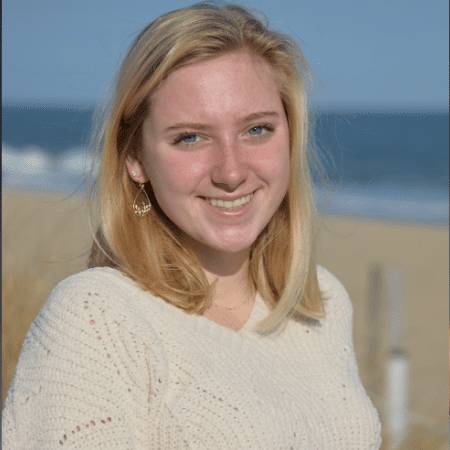“I’m at the point now with celiac disease that I’m more willing to advocate and support others, compared to the beginning of my journey. It’s something you have to figure out for yourself, but I’m at the point where I really want to be a resource and help my community. I want to be in an environment with people who are familiar with the diet and who have celiac disease and understand the struggle. That’s something new to me, and I’m sure for a lot of the other ambassadors, so that is really exciting.”
Meet Laura Mason (Clarksville, Maryland)
For Laura Mason, symptoms of celiac disease started when she was a child, painting a stark contrast between her and brother. “Growing up, I had extreme mood swings and temper tantrums, more than what a normal child probably would have experienced, and my parents knew that because I have an older brother and he doesn’t have celiac disease—so just by comparing me and him, they knew something was wrong and I got tested for a bunch of different things.”
As continued testing and medical appointments proved fruitless, Laura’s answer came in the form of a familial source: her grandfather. “My grandfather visited his brother who had celiac disease and found out what gluten-free food was, and he thought that he could have it because they were related. So he eventually got tested and was positive, and as soon as my grandfather told my mom about celiac disease (and then us doing some more research and looking at the symptoms and everything) we realized that it was definitely possible for me.”
A biopsy proved the possibility to be true, and Laura and her grandfather learned firsthand that celiac disease could affect men and women of all ages, at any time of life. The switch to the gluten-free diet finally brought relief for Laura, from symptoms as small as tooth decay to as extreme as stomach pains. “I think my most challenging time was before being diagnosed, just growing up, because I had a lot of mental imbalances and everything. I also wasn’t growing for a period of time, because not eating right was affecting my growth,” Laura explains. “With the behavior side of things I didn’t having a normal childhood, because growing and food just wasn’t normal as it should be compared to other kids. But once I was diagnosed, all my problems had really disappeared.”
As the years passed, Laura successfully learned to navigate the ups and downs of celiac disease, finding comfort in knowing that the hardest part of her journey—finding a diagnosis and relief from her symptoms—was behind her. “Growing up, I would say more of my everyday struggles would be things like going out to eat with friends or just looking at what I can eat at grocery stores and other small things, but nothing as extreme as before I was diagnosed.”
While finding celiac-friendly restaurants and gluten-free options on the go proved challenging at times, Laura found herself learning to advocate for herself by speaking to restaurant staff, studying menus, and learning celiac disease “hacks,” like avoiding meals with sauces that could have hidden sources of gluten. In the home, however, Laura can eat with ease, falling back on some of her favorite products for delicious snack options. “My favorite gluten-free food is probably Krusteaz blueberry muffin mix—it’s really good! And every time I want something sweet, it’s definitely easy to reach for a box of those and then just make them because even my immediate family, though none of them have celiac disease, they love it, and they think that it tastes normal.”
Now a junior in high school, Laura has turned her focus to the next chapter of her gluten-free life: finding a college with adequate gluten-free options. While the pandemic has put an end to in-person college visits temporarily, it doesn’t stop Laura from doing her research on celiac-safe universities from home. “I’m not able to see people, talk in-person with dining, but I’m trying to navigate websites and starting to make calls as I narrow down my college list, and also talk to people in the celiac disease community who have more experience than me.”
As Laura manages her college search, she also turns her focus to the celiac disease community as a Reach Beyond Celiac Ambassador Program. Initially hearing of the program through her local celiac disease resource, Baltimore Gluten Free, Laura was eager to join the community of ambassadors and make a difference, help others manage their diet, and share advice and her story, especially as a teenager with celiac disease.
In particular, working toward a cure as an ambassador excites Laura, creating a future free from food anxiety for herself, but also her future family. “It would mean a lot to me. I think that’s because I don’t know many people with celiac disease, and even little things like just going out to eat and just having to explain to people—if I were to just eat regularly and not have to worry about it every time I eat food, I think that that is something so huge,” says Laura. “And especially because down the line, my children could potentially have celiac disease, and avoiding that with a cure is something huge—for them to not deal with all the symptoms and everything else that I’ve had to go through.”
Donate here to support our Ambassador program.



